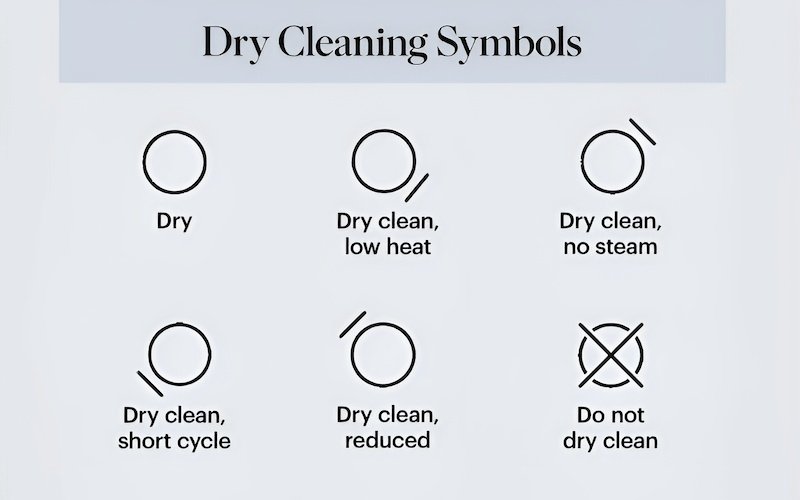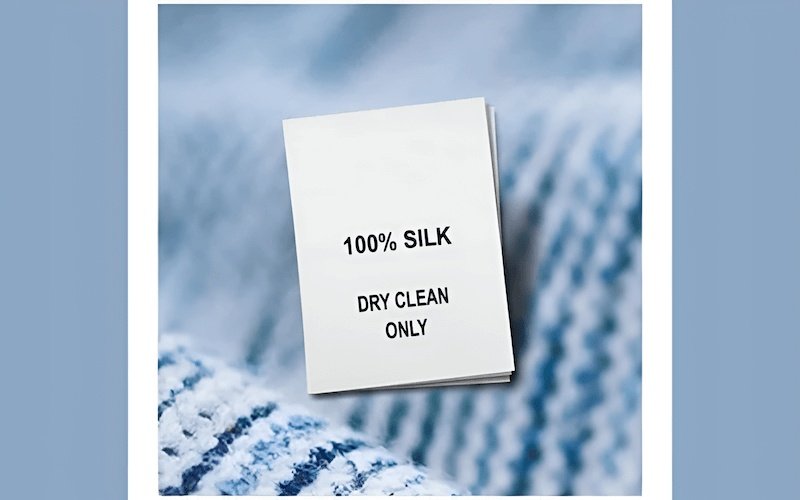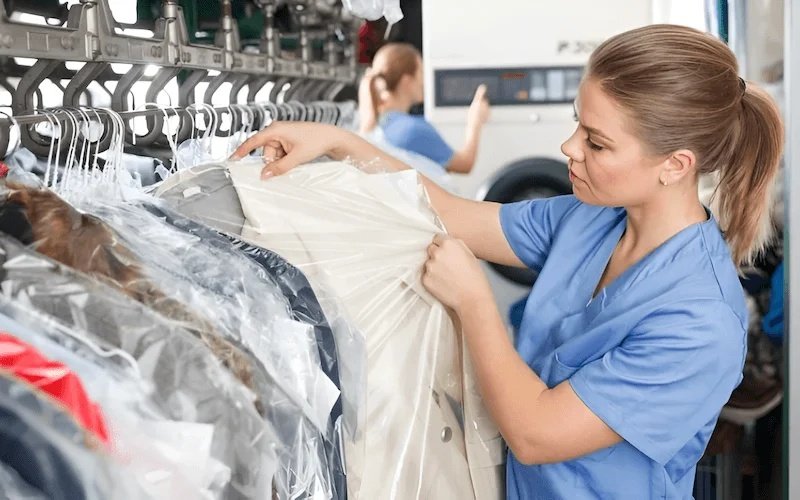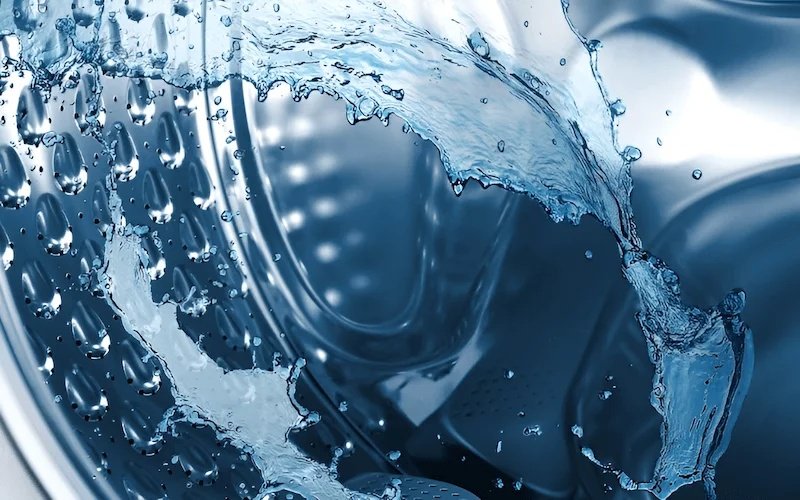Dry Clean Only: Understanding Garment Care
Have you ever fallen in love with a beautiful piece of clothing, only to be discouraged by the “Dry Clean Only” tag? It’s a common experience. That small label can seem like a barrier, raising questions about extra costs and complicated care routines. But understanding what that instruction truly means, and knowing your options, can help you keep your favorite outfits looking their best, without fear.
This article will provide all the important details related to “Dry Clean Only”. You’ll discover exactly what the term means, why certain garments require this special care, and how to make informed decisions to avoid damage, like shrinking or color bleeding.
Ultimately, learning about garment care, understanding washing instructions, and handling delicate fabrics will give you more control over your wardrobe’s longevity and appearance.
1. What does “dry clean only” mean?
1.1 Definition
“Dry clean only” is a cleaning instruction found on garment labels, indicating that the item should not be washed using conventional methods with water and detergent. Instead, it signifies that the garment requires dry cleaning, a solvent cleaning process that minimizes the risk of damage.
1.2 Care label symbols
Care labels often feature symbols that provide specific dry cleaning instructions. A circle is the primary symbol for dry cleaning. Variations within the circle indicate the type of solvent that should be used. For instance, a circle with a “P” inside suggests the use of any solvent except trichloroethylene, while a circle with an “F” indicates petroleum-based solvents are needed. An empty circle typically means any solvent can be used. Understanding these dry clean only symbols is key to relaying the correct information to your chosen dry cleaner.

1.3 Solvent-based cleaning
Dry cleaning is called “dry” because it doesn’t use water. Instead, the process involves chemical solvents to remove soil and stains from fabrics. These solvents are effective at cleaning delicate textiles that could be damaged by water, such as those prone to shrinkage, distortion, or color bleeding. Textile preservation is a primary benefit of this approach.
1.4 Professional vs. at-home
When faced with a “dry clean only” label, there are two primary options: professional dry cleaning and at-home dry cleaning. Professional dry cleaning offers the expertise and specialized equipment needed for a safe cleaning. At-home dry cleaning kits offer a more convenient and sometimes cost-effective solution, but carry a higher risk if not used correctly. Washing using the wrong method could cause damage.
2. Why are some clothes labeled “dry clean only”?
2.1 Delicate fabrics
Certain fabrics are inherently more delicate than others, making them susceptible to damage when exposed to water. Water can weaken the fibers, leading to shrinkage, distortion, or color changes. Washing instructions on these items often specify “dry clean only” to ensure their longevity.
- Silk: Silk is a luxurious, natural fiber known for its smooth texture and delicate nature. It’s highly prone to shrinkage and color bleeding when washed with water.
- Wool: Wool fibers have a unique structure that can cause them to felt and shrink when exposed to heat and agitation in a washing machine. This felting process is irreversible.
- Rayon (including Viscose and Modal): Rayon, Viscose, and Modal are semi-synthetic fabrics made from cellulose. They can shrink, stretch, and experience color bleeding when washed improperly.
- Acetate: Acetate is another delicate fabric known for its sensitivity to heat and water. It can easily be damaged by both.
- Linen: Linen is a strong, natural fiber, but it can wrinkle excessively and potentially shrink when washed. Some linen garments are labeled “dry clean only” to maintain their shape and crisp appearance, while others can be carefully washed.
- Blends: Fabric blends, which combine different fiber types, can be particularly tricky to care for. The washing instructions should always be followed closely, as the blend’s most delicate component dictates the cleaning method.

2.2 Garment construction
Beyond the fabric itself, the way a garment is constructed can also necessitate dry cleaning. Linings, interfacings (used for structure), shoulder pads and embellishments (like beads or sequins) can be damaged by water or agitation in a washing machine, leading to a loss of shape or detail.
2.3 Dye stability
Some dyes used in clothing are not water-fast, meaning they can bleed or fade when exposed to water. Dry cleaning helps to maintain the vibrancy of these colors and prevent dye transfer onto other parts of the garment or other items in a wash load.
3.What happens if you wash “dry clean only” clothes?
3.1 Shrinking
Washing “dry clean only” clothes can lead to shrinking. This happens when the fibers of the fabric contract, often irreversibly, resulting in a smaller garment.

3.2 Color bleeding
Color bleeding is another risk. Dyes can be released from the fabric and transfer to other areas of the garment or other items, causing staining and discoloration.
3.3 Fabric distortion
The overall texture and appearance of the fabric can change. The garment may become misshapen, lose its drape, or develop an uneven texture.
3.4 Damage to embellishments
Embellishments such as beads, sequins, or lace can be loosened, damaged, or completely detached during washing.
3.5 Loss of finish
Some fabrics have special finishes, such as water repellency or stain resistance, that can be removed by washing, reducing the garment’s functionality.
3.6 Real life example
There have been many real-life situations where customers have damaged their clothes when they washed clothes labeled “dry clean only” at home, such as shrinking clothes, fading colors, and losing their shape. These situations all come from not following the instructions on the care label.
4. How to safely clean “dry clean only” clothes?
4.1 Option 1: Professional dry cleaning
Professional dry cleaning is generally the safest option for “dry clean only” garments. It ensures that the items are handled with the appropriate care and cleaning methods to minimize the risk of damage.
Benefits: Professional cleaners have the expertise, specialized equipment, and access to a range of solvents to effectively clean different fabrics and remove stains. They are trained to handle delicate items and address specific cleaning needs.
Choosing a Reputable Dry Cleaner: Finding a reputable dry cleaner is crucial. Look for businesses with positive customer reviews, relevant certifications, and a clear understanding of garment care. Asking for recommendations can also be helpful.
Cost Considerations: While professional dry cleaning involves a cost, it’s often a worthwhile investment to preserve valuable or delicate garments. The price can vary depending on the item and the cleaner’s location.

4.2 Option 2: At-home care (When possible)
At-home care for “dry clean only” items requires careful consideration and is not always recommended. However, in some cases, it might be possible, provided you assess the risks and follow proper procedures.
Assessing the Risk: Before attempting at-home care, consider the fabric, the garment’s value, and the care label’s instructions. If the item is expensive, sentimental, or made of a highly delicate fabric, professional cleaning is generally the better choice.
Spot Testing: Before cleaning the entire garment, perform a spot test in a hidden area (like an inner seam). Apply a small amount of water and, if using detergent, a tiny drop of mild detergent. Gently blot with a white cloth to check for color bleeding or any other adverse reaction.
Hand Washing: If the spot test is successful, and you decide to proceed with hand washing, follow these steps:
- Fill a clean basin with cold water.
- Add a very small amount of mild detergent formulated for delicate fabrics.
- Gently submerge the garment and agitate the water.
- Avoid rubbing or scrubbing the fabric.
- Rinse thoroughly with cold water until all detergent is removed.
- Gently squeeze out excess water.
Delicates Cycle (Machine Washing): Machine washing “dry clean only” clothes on a delicates cycle is extremely risky and generally (not recommended). If you choose to proceed, use a mesh garment bag, cold water, and a mild detergent. Be aware that even the gentlest cycle can still cause damage.
Air Drying: Never put “dry clean only” items in a dryer. Air drying is essential to prevent shrinkage and heat damage. Lay the garment flat on a clean, dry towel, or hang it on a padded hanger, avoiding direct sunlight or heat.
At-Home Dry Cleaning Kits: At-home dry cleaning kits, such as Dryel, offer a convenient alternative to professional cleaning. These kits typically involve placing the garment in a bag with a cleaning cloth and tumbling it in a dryer on a low heat setting. While convenient and often cost-saving, their stain removal capabilities are limited, and they may not be suitable for all fabrics or heavily soiled items.
Steaming: Steaming can be a useful method for refreshing “dry clean only” garments between cleanings. It helps remove wrinkles and odors without the use of harsh chemicals or water immersion.
5. Alternatives to traditional dry cleaning
5.1 Wet cleaning
Wet cleaning is a water-based alternative to traditional dry cleaning. It uses specialized detergents and computer-controlled washers and dryers to carefully clean garments that are typically dry-cleaned. This method is often considered more environmentally friendly than traditional dry cleaning.

5.2 CO2 cleaning
CO2 cleaning utilizes liquid carbon dioxide (CO2) as the cleaning solvent. This method is considered environmentally friendly because the CO2 is often captured from industrial processes and is non-toxic. It’s a solvent-free cleaning process.
5.3 GreenEarth cleaning
GreenEarth cleaning uses a silicone-based solvent (siloxane) that is considered to be gentler on fabrics and the environment than traditional dry cleaning solvents. It is often advertised as an environmentally friendly and gentle cleaning option.
5.4 Other Eco-Friendly Options
Other sustainable cleaning methods are emerging, including those using hydrocarbon solvents. These options aim to minimize environmental impact while still providing effective cleaning for delicate garments. The focus is on finding alternative cleaning methods that reduce reliance on harsh chemicals.
6. Stain removal for “dry clean only” clothes
6.1 General principles
When dealing with stains on “dry clean only” clothes, quick action is crucial. The longer a stain sits, the harder it is to remove. Blot, don’t rub, the stain with a clean cloth to prevent spreading. Always test any stain remover in an inconspicuous area first.
6.2 Specific stain types
| Stain Type | Recommended Treatment | Notes |
|---|---|---|
| Oil | Blot with a clean cloth. Apply talcum powder or cornstarch to absorb the oil. Let it sit, then brush off the powder. | Avoid using water, as it can spread the oil. |
| Ink | Consult a professional. | Ink stains are notoriously difficult to remove and require specialized treatment. |
| Wine (Red or White) | Blot immediately with a clean cloth dampened with cold water. Do not rub. | For red wine, follow up by blotting with a cloth dampened with white wine or a specialized stain remover. |
| Coffee/Tea | Blot with a clean, damp cloth. | If cream or sugar were involved, professional cleaning is often recommended. |
| Grass | Consult a professional. | Grass stain can be difficult to remove. |
6.3 When to seek professional help
For stubborn, set-in stains, or if you are unsure about how to treat a particular stain on a delicate fabric, it’s always best to seek professional stain removal from a dry cleaner. They have the expertise and specialized products to handle challenging stains without damaging the garment.
7. Related questions
7.1 Can I iron “dry clean only” clothes?
It depends. Check the care label for ironing instructions. If ironing is permitted, use a low heat setting and a pressing cloth to protect the fabric.
7.2 How often should I dry clean my clothes?
Frequency depends on wear and soiling. Items not worn frequently or heavily soiled may only need occasional cleaning.
7.3 What should I do if my “dry clean only” garment gets wet in the rain?
Allow the garment to air dry completely, away from direct heat or sunlight. Once dry, assess for any water spots or damage. If needed, take it to a professional cleaner.
7.4 Are there any “dry clean only” clothes that can always be washed at home?
No. The “dry clean only” label should always be taken seriously. While some items might tolerate gentle hand washing, it’s always a risk.
7.5 What is the lifespan of clothes?
The life expectancy of clothing depends on many factors, including the type of fabric, how often it is worn, how it is cared for, and the quality of the garment.
Read more:
Understanding the “dry clean only” label is essential for proper garment care. While it may seem restrictive, the instruction is there to protect delicate fabrics, intricate construction, and unstable dyes, preserving the appearance and extending the life of your clothes.
By learning about cleaning methods, assessing risks, and knowing when to seek professional help, you can confidently care for your “dry clean only” wardrobe. Responsible garment care ensures that your clothes continue to look their best for longer.






















